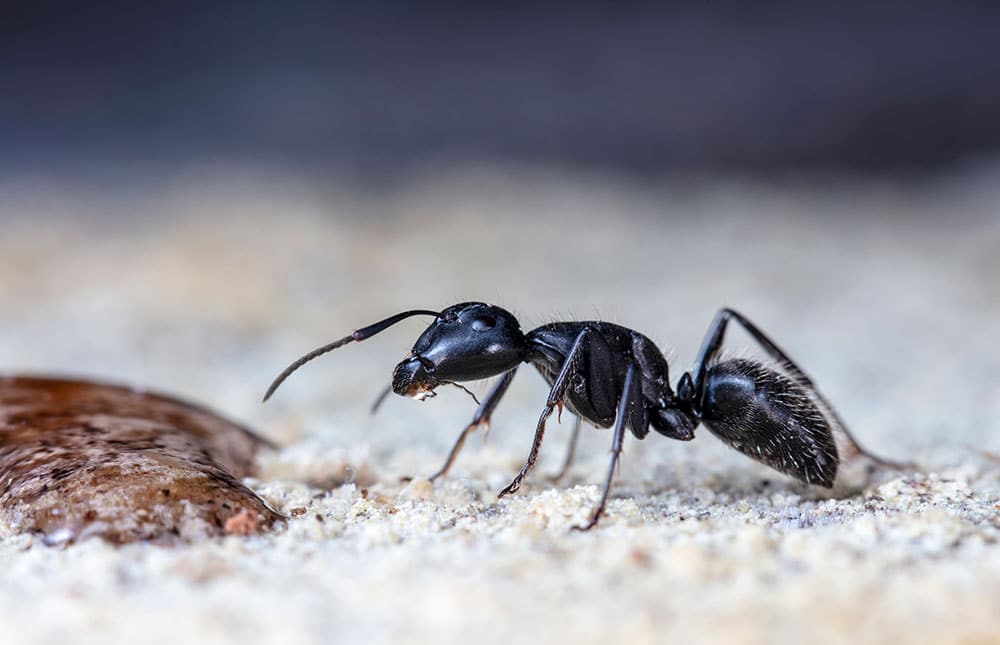
Ants can be nightmarish pests. You may not mind finding the odd ant now and again, but where there is one, there could be more. Little is worse than relaxing in the safety of your home, only to find scores of these hungry six-legged housemates. If you suspect your house has an infestation, here are some signs to watch out for.
Large Numbers of Ants
The first and most obvious sign that you have an ant problem is finding ants in droves. Are you afraid to leave food out because ants will get to it before you can store it safely? Do you find ants in the unattended food dish of your pet? Both are strong indicators that there is an ant colony nearby. Ants may also appear in unexpected places such as power outlets or bathrooms. If you suspect an infestation, be sure to keep your eyes peeled.
Ant Trails
Another great way to identify a nearby colony is the presence of scouts. Ants often travel long distances in search of food. Scouts will initially separate from their colony and communicate their path via a trail of pheromones. If you come across a string of ants in your home, killing them will not be enough. Be sure to destroy the trail of pheromones so no other ants can follow suit. To do this, mix some white vinegar with water and spray it on the affected area. This not only destroys the pheromone trail but also acts as a deterrent for future insect visitors.
Sawdust
Some ants are adept at burrowing into the wood to form their colonies. Keep an eye out for trails or piles of sawdust. This is often an indicator that carpenter ants are nearby. In the event you have carpenter ants, you likely will need to call expert ant extermination professional. These ants are incredibly pervasive and can be quite challenging to expel from your home.
Wooden Structures are Unsound
Have you noticed an increase in brittle wood on your property? Do you have wooden structures that are crumbling faster than anticipated? These, too, are often the handiwork of carpenter ants.
These ants can be especially hard to detect due to the nature of their home. Instead of catching them scurrying across the floor, they prefer to burrow through the wood.
If you suspect these crafty creatures have made it into your home, check the wood. The best way to do this is by knocking on it and listening to the resultant sound. A dull thud is excellent news. A hollow sound could spell trouble. A hollow beam can mean ants have burrowed through the wood. This is cause for concern because not only are ants nesting in your place, but they are also weakening the structural integrity of your home. If this is the case, do not hesitate and call a professional.
Small Mounds of Dirt
Anthills are also a telltale sign of a nearby ant colony. These can be easy to miss, so look carefully. Examine the area outside your home and look for small mounds of earth. If you find one, be sure to record its location but do not disturb the ants. If you do, you risk angering the colony and drawing out these insects in mass.
Disembodied Wings
A much less common but surefire sign of ant activity are wings left on the ground. Certain kinds of ants have wings before they shed. This happens during summertime to follow young queens to new nests. Look for these wings on the floor and near windows and doors. If you find wings, report them to a professional. It can be instrumental in helping a pro discern what kind of ant they are dealing with.
Sounds in the Walls
Lastly, another sign may be the sound of scurrying within a wall. If you think you hear something faint emanating from your wall, do not dismiss it. Press your ear to the wall and listen carefully. The faint sound could mean something far more insidious, as ants could be in the walls eating the structure of your home.
Additionally, ants can also move between walls and wallpaper. If you have wallpaper, be sure to check for any nicks or tears through which ants could be moving.
Nobody wants an ant infestation. Not only are they disturbing, but they can spoil your food, destroy your home, and make living uneasy, to say the least. If you suspect you have an ant problem, use the above tips to check your property. At best, it is nothing, and you can rest easy. At worst, you know what you are up against and are ready to call in the professional.